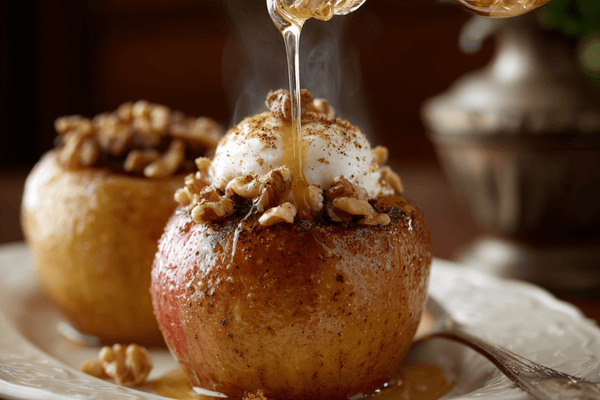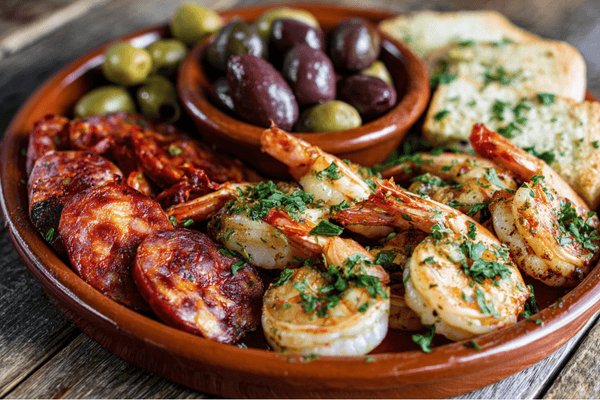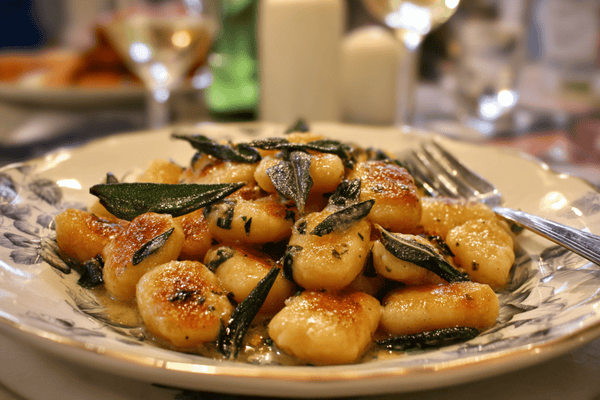 Food is a big part of Japanese culture. While most Westerners are familiar with the savoury Japanese dishes and green tea, we’d bet that most people would struggle to name a Japanese dessert. But the truth is that people in this Asian country adore a sweet treat and as such, there are tons of tasty Japanese desserts at your disposal.
Food is a big part of Japanese culture. While most Westerners are familiar with the savoury Japanese dishes and green tea, we’d bet that most people would struggle to name a Japanese dessert. But the truth is that people in this Asian country adore a sweet treat and as such, there are tons of tasty Japanese desserts at your disposal.If you’re looking for a way to bring a bit of Asian culture to your cuisine and want to whip up a sweet storm, then you’ll need to get better acquainted with some of the most popular Japanese desserts.
Table of content
Is Dessert a Big Deal in Japan?
We’d bet if we asked you to talk about Japanese food, you wouldn't list traditional Japanese desserts, but rather you’d tell us about sushi or ramen. But did you know that desserts are such a big deal in Japan that people even have a ‘second stomach’ which they call the betsu bara, especially for dessert, even after a big meal? However, it’s not common practice in Japan to eat dessert after a meal. Instead, they have dedicated times for it such as around tea time.
When you visit Japan, you might not see a huge selection of the dessert menu of a traditional restaurant. Normally, this will feature a few Chinese dishes and maybe some ice cream. But that isn’t to say that the Japanese don’t have a sweet tooth, they just eat desserts in a different way to Westerners.
Desserts are more of an event than you might think and there are tons of Japanese sweet bakeries dotted around selling sugary treats.
The Japanese are big foodies so it’ll come as no surprise that dessert is pretty much always on the menu. It’s thought that the use of sugar as a sweetener happened around 2500 years ago in China. However, it took until the 13th century for this to sweep across the globe so Japan wasn’t the first on the bandwagon. But even before sugar, Japanese chefs were experimenting with natural ingredients to make sweet treats.
This might have included things like sweet beans, rice and natural products from flowers such as nectar. It wasn’t until the Europeans introduced sugar to Japan that they suddenly changed their approach to desserts.
The wonderful thing about visiting modern Japan is that there is a brilliant blend of traditional sweets as well as Western ones. This was boosted by the introduction of sugar and as such, there is a heavy Western influence in many Japanese desserts. The main difference between the desserts we have here in the West and those in Japan is that the Japanese use far less sugar; could that mean that Japanese desserts are much healthier?
Delicious Desserts From Japan
If you travel to Japan then you’ll likely enjoy some sweet foods with tea as this is the most common way to eat them. The choice on offer is pretty impressive and while I couldn’t possibly list every Japanese dessert here, I’ll talk about some of the most popular.
Coffee Jelly
 In Japan, coffee jelly is known as kohii zerii. It sounds remarkably like the English pronunciation, doesn’t it? That’s because this is a dessert that has deep-rooted western influences from the gelatin desserts we see in the UK and the United States.
In Japan, coffee jelly is known as kohii zerii. It sounds remarkably like the English pronunciation, doesn’t it? That’s because this is a dessert that has deep-rooted western influences from the gelatin desserts we see in the UK and the United States.In this Japanese version, black coffee is mixed with gelatin and once it cools, it sets to a jiggly consistency. Many people enjoy eating this with a dollop of cream and it’s a very popular summertime dessert.
What’s more, while dessert after dinner isn’t commonplace in Japan, when it does occur, coffee jelly will likely be on the menu.
Manju
 If you head to Japan and ask to try the most popular sweet then there’s a very good chance you’ll be given manju. These are little dumplings made from red bean pastes that are then wrapped in dough and either baked or steamed.
If you head to Japan and ask to try the most popular sweet then there’s a very good chance you’ll be given manju. These are little dumplings made from red bean pastes that are then wrapped in dough and either baked or steamed.There are lots of different ingredients that can be used to make manju including rice flour, sticky rice and buckwheat to make the dough. For the paste, you may find things like miso, chestnuts, or green peas so there’s some great diversity between each manju.
Daifuku is a type of manju consisting of paste wrapped in rice cake whereas monaka is another type that sees thinly stretched paste baked in rice cake dough.
Castella
 As we mentioned earlier, it was the Europeans that introduced sugar to Japan and this happened around the 16th century when Portuguese missionaries first came to this country. In Portugal, desserts are incredibly important and we see a lot of inspiration from this European country in Japanese desserts.
As we mentioned earlier, it was the Europeans that introduced sugar to Japan and this happened around the 16th century when Portuguese missionaries first came to this country. In Portugal, desserts are incredibly important and we see a lot of inspiration from this European country in Japanese desserts.Castella is one such example of this and it’s a type of sponge cake that takes its inspiration from the delicately sweet and light Portuguese pastries.
In Japan, head to Nagasaki to try some of the very best castella as this area is considered to be the castella capital and many people go there just to get a tasty souvenir.
Fruit Sandwiches
 What we love about international cuisine is that where in one country something can be savoury, it can be sweet in another. Sandwiches are the perfect example. Here in the West, sandwiches are often seen as a savoury food but the Japanese have other ideas.
What we love about international cuisine is that where in one country something can be savoury, it can be sweet in another. Sandwiches are the perfect example. Here in the West, sandwiches are often seen as a savoury food but the Japanese have other ideas.In Japan, furutsu sando, or fruit sandwiches are mind-blowingly popular. People will take two pieces of classic Japanese sweet bread and remove the crusts before adding sweet fruits and even whipped cream. While you can add any type of fruit you’d like, things such as banana, mango, kiwi and strawberry are among the most popular.
Miss Yokan
 If you go to Japan during the summer months then you’ll likely be offered mizu yokan which is a type of jelly made from red beans. Are you noticing that this is a very popular ingredient in Japanese desserts?
If you go to Japan during the summer months then you’ll likely be offered mizu yokan which is a type of jelly made from red beans. Are you noticing that this is a very popular ingredient in Japanese desserts?This jelly is served chilled and is beautifully light and refreshing. It’s commonly eaten with a cup of matcha and the jelly is typically shaped into small rectangular blocks. While red beans are the most common ingredient for this dessert, there are other versions of it.
Japanese Christmas Cake
 If you thought that Christmas cake was something that we only eat here in the West then think again; the Japanese have their very own version and it’s extremely popular. However, their version of Christmas cake is nothing like what we have here. It is more similar to the strawberry shortcakes that are popular in the USA.
If you thought that Christmas cake was something that we only eat here in the West then think again; the Japanese have their very own version and it’s extremely popular. However, their version of Christmas cake is nothing like what we have here. It is more similar to the strawberry shortcakes that are popular in the USA.Made from beautifully soft sponge, fresh strawberries and sweet whipped cream, these desserts pop up all over Japan during the festive season. While they are inspired by Western culture, the Japanese use them in their own way. Not only are they popular at Christmas, but they’re also a popular type of birthday cake.
Wagashi
 As we have already mentioned, a lot of Japanese desserts are enjoyed with tea and wagashi are among some of the most popular. These are, for all intents and purposes, the same as the manju we discussed earlier; mochi rice cakes filled with bean paste and other ingredients. The great thing about them is that there are so many different types. If you were to have afternoon tea in Japan, you’d be presented with a gorgeous spread of wagashi.
As we have already mentioned, a lot of Japanese desserts are enjoyed with tea and wagashi are among some of the most popular. These are, for all intents and purposes, the same as the manju we discussed earlier; mochi rice cakes filled with bean paste and other ingredients. The great thing about them is that there are so many different types. If you were to have afternoon tea in Japan, you’d be presented with a gorgeous spread of wagashi.While it is possible, and quite easy, to make wagashi at home, there are hundreds of confectioners around Japan that specialise in making them so most people just buy them.
Anmitsu
 Parfait is very popular in Japan thanks to the French inspiration. One type of parfait is anmitsu which is a traditional dessert from Japan made from, you guessed it…red bean paste. Other ingredients include fresh fruit, jelly cubes, and sugar syrup. In modern versions of this classic dessert, you may also get mochi and ice cream.
Parfait is very popular in Japan thanks to the French inspiration. One type of parfait is anmitsu which is a traditional dessert from Japan made from, you guessed it…red bean paste. Other ingredients include fresh fruit, jelly cubes, and sugar syrup. In modern versions of this classic dessert, you may also get mochi and ice cream.
Chi Chi Dango Mochi
 In Japan, because the desserts are not as sweet as in the West, it is deemed acceptable for adults to indulge more often. However, that doesn’t mean that the kids are missing out and chi chi dango mochi are among some of the most well-loved children’s treats in the country.
In Japan, because the desserts are not as sweet as in the West, it is deemed acceptable for adults to indulge more often. However, that doesn’t mean that the kids are missing out and chi chi dango mochi are among some of the most well-loved children’s treats in the country.These are pink, chewy sweets that children usually enjoy at festive parties as well as at family celebrations. They’re similar to mochi in many ways but there’s a slight twist on them as chi chi dango mochi contain coconut milk and sugar.
These little delights are oven-baked and food colouring is used to give them their classic pink hue. That said, it’s possible to use any food colouring to make your very own creations which a lot of people do when making chi chi dango for a party as they can fit the theme.
Taiyaki
 Another of the most popular desserts in Japan is taiyaki. These are one of many different types of pastries or cakes that are filled with a type of sweet red bean paste known as anko.
Another of the most popular desserts in Japan is taiyaki. These are one of many different types of pastries or cakes that are filled with a type of sweet red bean paste known as anko.Taiyaki come in the shape of a red snapper fish. Why is this? Well, these fish are said to bring good luck, according to Japanese culture. However, there are many other types including dorayaki which consists of two pancakes with anko in the middle. There are also imagawayaki which are round pastries with delicious anko inside.
Isobeyaki
 Mochi are incredibly popular in Japan and there are many ways of eating these sweet treats but isobeyaki is perhaps one of the most popular. The Japanese love to have these snacks during the New Year celebrations but they’re also a very popular choice throughout winter.
Mochi are incredibly popular in Japan and there are many ways of eating these sweet treats but isobeyaki is perhaps one of the most popular. The Japanese love to have these snacks during the New Year celebrations but they’re also a very popular choice throughout winter.One of the reasons that these treats are so well-loved is how easy they are to make. It literally takes around five minutes to fry or grill the mochi and then you can add soy sauce to your liking before wrapping everything in seaweed.
Mochi Ice Cream
 We had to save the best until last. Mochi ice cream has really boomed in popularity in the Western world recently, thanks to the power of social media.
We had to save the best until last. Mochi ice cream has really boomed in popularity in the Western world recently, thanks to the power of social media.This dessert was invented by a Japanese-American lady called Frances Hashimoto who came up with the idea of taking ice cream and wrapping it in a rice cake. The concept was played with and eventually, we ended up with those sweet, flavoursome little balls we all know and love.
The great thing about mochi ice cream is that it comes in so many different flavours from chocolate to strawberry, tropical fruits to green tea ice cream, coffee and much more. Although in Japan, red bean remains one of the most popular flavours.
Final Thoughts
Japan is a country well known for its unique cuisine and the desserts you’ll find here are among some of the most interesting in the world. For many years, dessert wasn’t a huge deal in Japan but when Europeans introduced sugar, things changed!Japanese desserts are heavily influenced by Western cuisine so many of the things you’ll see are recognisable. That said, there are also things like mochi and taiyaki that are unique to Japan and the perfect way to immerse yourself in this cuisine.


